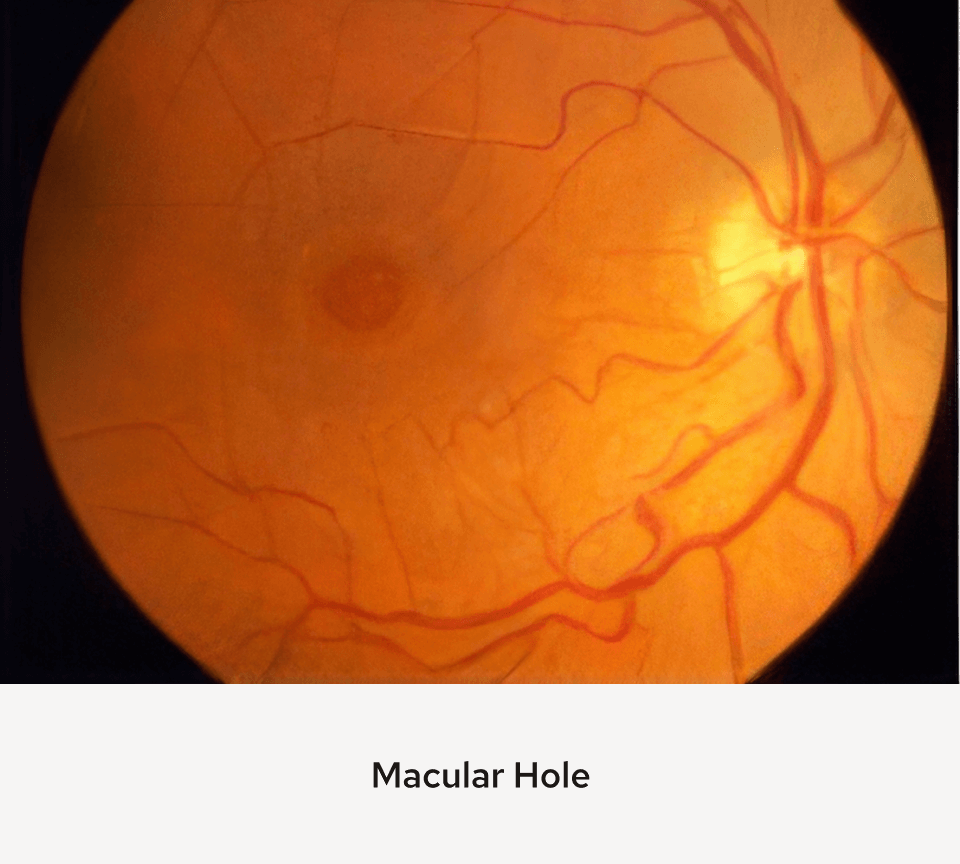Macular Holes
Macular holes are part of a larger group of disorders caused by abnormal pulling or traction of the vitreous gel on the retina. The vitreous gel occupies the back two-thirds of the eye and is normally attached to the retina when you are born. As you age, the vitreous tends to separate away from the retina. Typically, between the ages of 50 and 70 in most of us, the vitreous separates completely from the retina resulting in new floaters, a process called posterior vitreous detachment. This is normal, and in most cases, there’s no problem. However, in some patients, when the vitreous separation is occurring, it holds onto the macula and can pull enough to create a hole.

Patients who develop macular holes, may initially experience distortion of vision but ultimately end up with a loss of central vision with a dark blind spot. When someone with a macular hole tries to read, letters may be missing in the center of a word. Fortunately, macular holes can be repaired with surgery. Surgery can be done as an outpatient, but requires face-down positioning for a period of several days. Usually, surgery is successful in repairing 90% or more of macular holes, resulting in visual improvement. Alternatives to face down positioning are available in certain cases. Vision will improve after surgery but almost never recovers to normal levels.
Your doctor will discuss with you all of the surgical options available for the treatment of these relatively common conditions. It is important to remember that patients who have macular hole in one eye have a 5-15% chance of developing macular hole in the fellow eye.
Schedule a Consultation for Macular Holes
The retina specialists of AVRUC provide expert care for Macular Holes. With convenient retina center locations in Carmel, Bloomington, Muncie, and Avon, we welcome patients from the greater Indianapolis area, Evansville, Lafayette, Terre Haute, and beyond.

